Triggerfish: A complete guide to spots, equipment, and techniques for catching the "pig" of the seabed.
You see it rise from nowhere, a rhomboid shape darting and then stalling in front of the bait: a sharp snap, the line vibrates, the reel sings. In that second, you understand why the triggerfish, with those chisel-like teeth, is as feared as it is coveted. And if the scene happens just a stone's throw from the shoreline, the adrenaline doubles: now it's up to you to decide whether the trigger will go off in your favor.
This guide was created to guide you step by step, from choosing the spot to cleaning the fillet. No parlor recipes: just field experience, clear numbers, and a few tricks that, on a boat—or with your feet in the sand—can make the difference between a missed hook and a souvenir photo with the "pig" of the seabed.
Triggerfish Identification Kit: What You Need to Know Before Casting Your Line
Morphology, behavior, and why it's called 'pigfish'
It belongs to the Balistidae family, and although there are 26 species, Balistes capriscus dominates in the Mediterranean. Its diamond-shaped body, flat on the sides, is covered in bony scales that resemble tiles. The first dorsal fin, made up of three spines, functions like a real trigger : the first remains erect until the others are lowered, a characteristic the English call "triggerfish." Its mouth is small but armed with powerful incisors, capable of tearing apart sea urchins like popcorn. Its coloration varies from gray-green to white ventrally, dotted with blue highlights in summer adults.
Solitary by nature, it forms sparse schools only for defense. It loves to circle in midwater, ready to hide in crevices when it hears metallic noises. It emits a dry grunt when it surfaces, hence its nickname "pig." Few Mediterranean fish exceed 40 cm in length, but encounters exceeding 1.5 kg are not uncommon; port reports tell of a 2.8 kg that snapped off a 0.30 mm leader with a clean bite.
Where and when to find it: spots, seasons and ideal weather and sea conditions
Mediterranean vs. tropical waters
In our seas, it can be found from May to September, peaking in July-August when water temperatures exceed 23°C. It prefers mixed seabeds: sand surrounded by rocks, breakwaters, and coastal wrecks. In the lagoon, it approaches salt marshes to hunt soft crabs. In tropical environments—Cape Verde, the Maldives—the scenario changes: coral reefs, drop-offs, and anchored platforms attract dense schools, easy prey for ultralight spinning with micro jigs.
More productive time slots
The hours before dawn and the last quarter of the day bring the most frenetic activity. Clarity matters: in murky water, the triggerfish becomes suspicious, while in clear summer water, it strikes competitively. If fishing from a boat, take advantage of the vessel's shadow: it often positions itself right under the hull. From land, however, observe it between two even breakers; the undertow stirs up crustaceans and makes it aggressive.
Winning setup: rods, reels, terminals and cut-resistant accessories
Recommended configurations from the shore
For light surf , a 4–4.5 m line with a 150 g casting weight is sufficient. An 8000 spool filled with 0.30 mm nylon and a 0.50 mm shock leader is ideal. The fish isn't a marlin, but if it exceeds 1.5 kg, it cuts like a pair of scissors; so, insert 40 cm of 0.40 mm fluorocarbon or, on XXL specimens, a small piece of thin steel. Preferred hook: Aberdeen No. 2-4, long shank, easy to slip through those chisel-like teeth.
Boat configurations
For inshore bottom fishing, a 3m action 100g line works on depths of up to 30m. A 4000 reel, PE 1.5 braid, and a 0.25mm leader are recommended. For those who want to go all out, use 5–10cm of 0.17mm braided line for abrasion resistance. A 50g lead is used in calm waters, and 120g if the current is strong. Don't forget your landing net: the triggerfish's shell offers little grip, and its shoulder blade often slips out of the water.
- Neoprene gloves: prevent scratches from rough skin.
- Polarized glasses: they reveal shadows under the boat.
- Long pliers: safety for you and intact hook.
The 4 techniques that really work on triggerfish
Bottom fishing near the coast
Unload the boat near the rocks, and in another 12-15 m, lower the three-leg drop. Each drop uses 0.25 mm monofilament and a small length of 0.17 mm braided line. No. 5 eyed hook, bait: whole shrimp or squid fillet. Don't cast: let it sink vertically and move with small wrist lifts. The bite is clear, a "clack" in the tip. Set a firm strike, retrieve steadily to prevent it from cutting.
Light drifting
Following the trail of fine groundbait—bread and blended sardines—release a 0.30 mm line with 1 m of thin steel or 0.45 mm fluorocarbon leader . A long-shanked No. 2 hook, and bait with peeled paranza shrimp. Keep the boat at idle speed, 0.5 knots. The triggerfish rises, intrigued by the column of clear particles: you spot the dorsal fin, so open the bait and slide it. Count to three, strike: no compromise.
Deep sea trolling
2–3 knots is the right speed for a 7–11 cm minnow that swivels in midwater. In the Mediterranean, use it along sandy channels where you encounter amberjacks and saddled breams; triggerfish, attracted by the vibrations, strike from the side. Use a 10 kg steel cable between the lure and the leader to avoid bites. Unlike pelagic fish, don't get hooked on the turn: a sharp strike is needed to get past the bony mouth.
Surf casting
Choose beaches with mixed seabed. Cast past the first break, let the lead sinker grip, and tighten the line. Use a bibi or American bait on a #4 Aberdeen hook. Wait for quick strikes, sometimes letting the tip vibrate without bending it. If you strike late, you'll find the bait as clean as a lab. A large reel, not for strength, but to quickly retrieve the 100 meters of line before it cuts.
Baits, baits, and presentation strategies: what triggers the crossbow?
Naturally resistant
It loves shells and tough meat: shelled shrimp, squid fillet, cuttlefish. The trick is to hook the hook into a hard spot to prevent the bait from flying away at the first flick of the tail. With worms, a whole, elastic American worm or a string worm works well. Always leave a little loose line; the fish pulls to the side before biting: that margin encourages it to bite with confidence.
Artificial: minnow and micro jig
When the water is crystal clear, a pearly-shimmering minnow produces furious runs. Ultralight spinning with 10–20g metal jigs offers surprises near the coast on the smaller islands. Erratic retrieve, two jerks, and a pause; the attack often occurs in a stall. Reinforced treble hooks: the first bite twists them mercilessly. Paint the jig with phosphorescent dots if you're fishing at dusk: the triggerfish follows the luminous trail like a bat toward the candle.
Curiosities, records, and food safety: from grunt to table
Is it really edible?
White flesh, a flavor somewhere between sea bream and snapper, and few bones. It's considered safe in the Mediterranean: the ciguatera disease that affects tropical relatives is not recorded here. It's still good practice to gut the fish within half an hour, removing the liver and gonads. Roast in a pan at 180°C for 15 minutes, making sure the flesh remains moist: the heat-insulating shell risks cooking it on the outside and leaving it raw on the inside.
Size records and unusual uses of leather
The aforementioned 2.8 kg specimen remains the unofficial reference for the Tyrrhenian Sea. The IGFA world record belongs to a 5.2 kg caught in Bermuda. Its skin, rough as sandpaper, was used in the 19th century to finish matches; today, it sometimes ends up in luxury leather goods as an exotic insert. Divers once feared its bites on their rubber suits; even today, freedivers avoid leaving their fingers within reach.

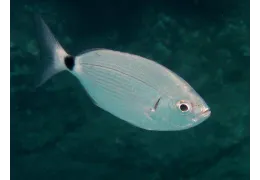
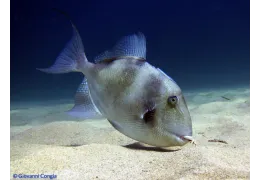
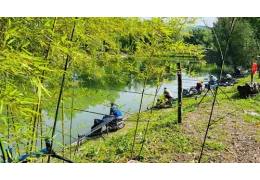
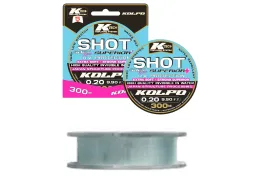
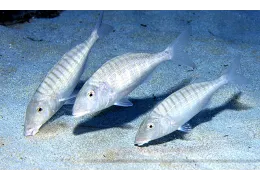
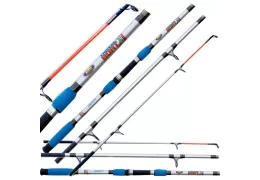
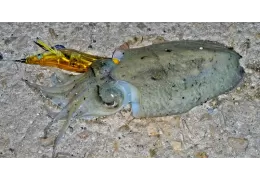
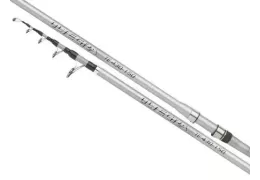



Leave a comment
Log in to post comments